Abstract
Regional myocardial ischemia is associated with increased levels of adenosine and norepinephrine, factors that may alter activation of the beta-adrenergic receptor (beta AR)-G protein-adenylyl cyclase pathway in the heart. We have used the ameroid constrictor model to determine whether alterations in myocardial signal transduction through the beta AR-G protein-adenylyl cyclase pathway occur in the setting of chronic episodes of reversible ischemia. Pigs were instrumented with ameroid occluders placed around the left circumflex coronary artery. 5 wk later, after ameroid closure, flow and function were normal in the ischemic bed, but flow (P = 0.001) and function (P < 0.03) were abnormal when metabolic demands were increased. The ischemic bed showed a reduction in myocardial beta AR number (P < 0.005). Despite regional downregulation of myocardial beta AR number, adenylyl cyclase activity was similar in the ischemic and control beds. Quantitative immunoblotting showed that the cardiac inhibitory GTP-binding protein, Gi alpha 2, was decreased in the ischemic bed (P = 0.02). In contrast, the cardiac stimulatory GTP-binding protein, Gs alpha, was increased in endocardial sections from the ischemic bed (P = < 0.05). Decreased Gi alpha 2 content was associated with decreased inhibition of adenylyl cyclase. Reduced Gi alpha 2 content, in conjunction with increased Gs alpha content in the endocardium, may provide a means by which adrenergic activation is maintained in the setting of chronic episodic myocardial ischemia.
Full text
PDF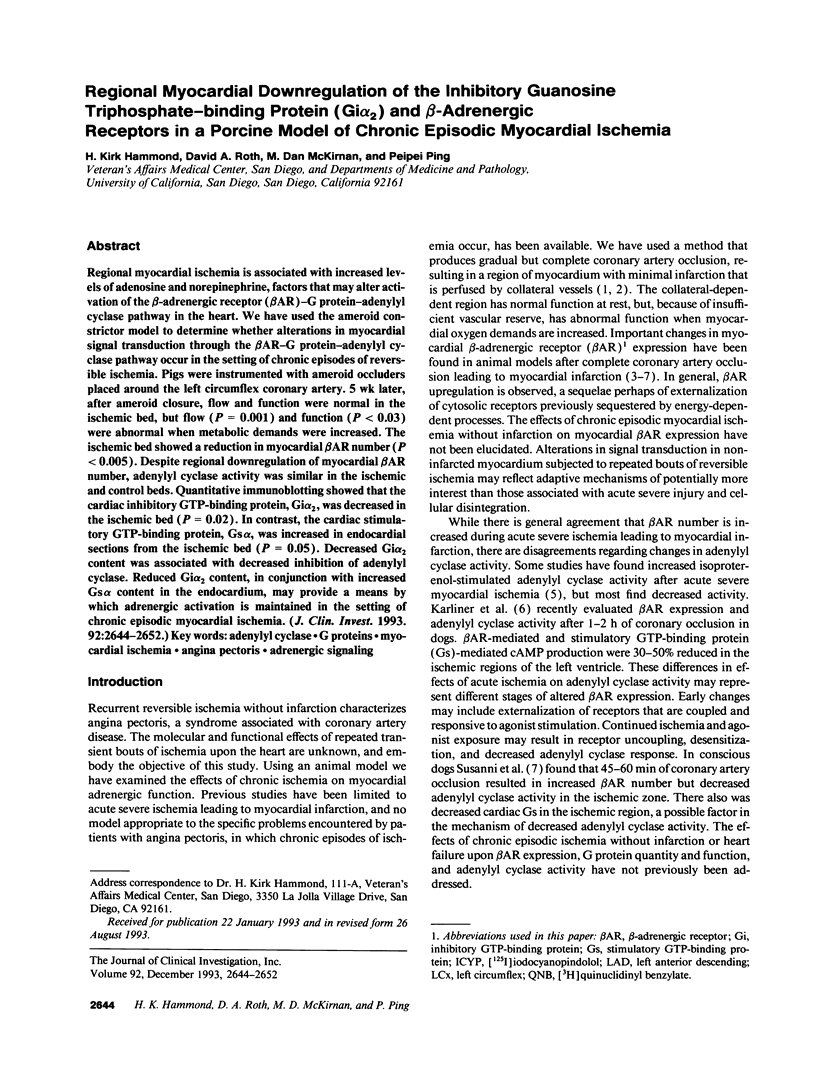
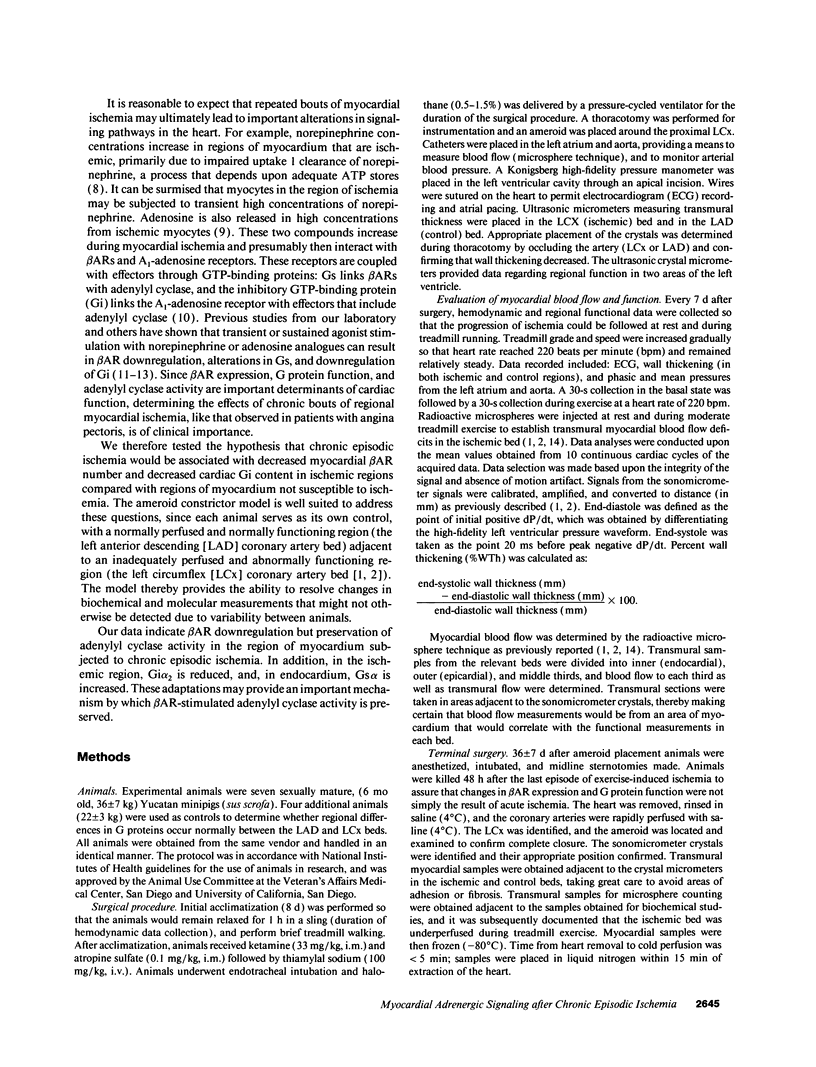
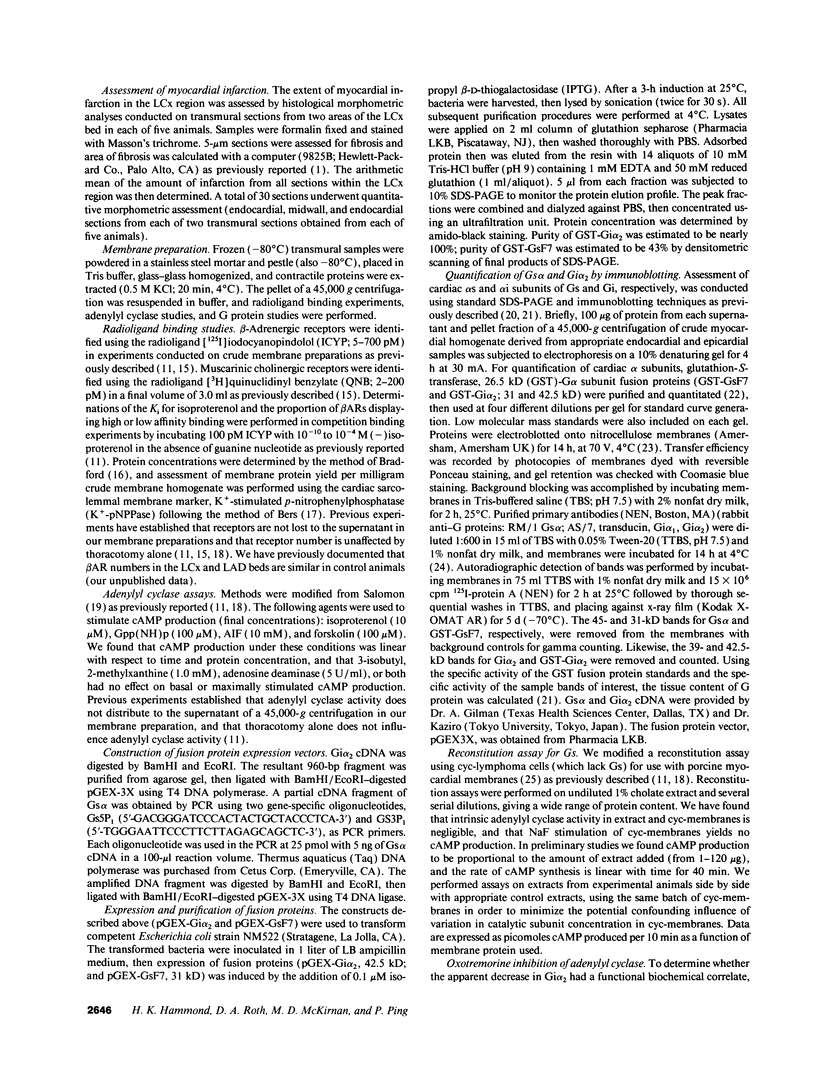
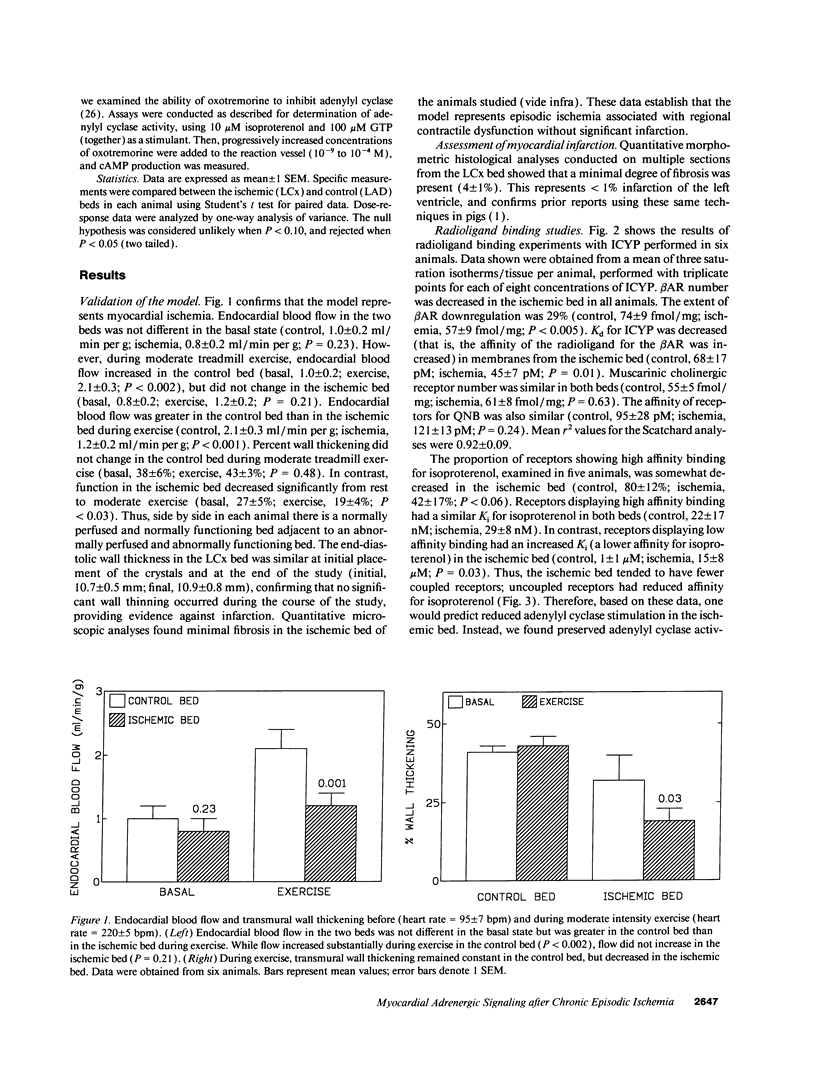
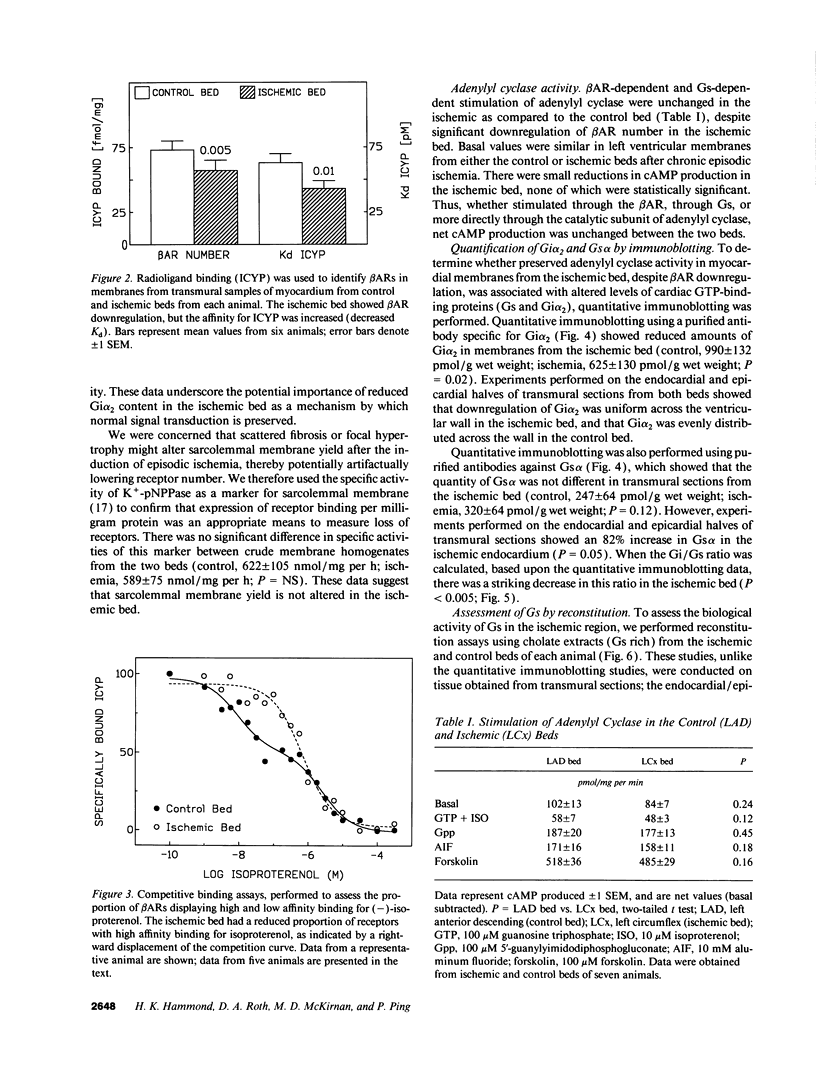
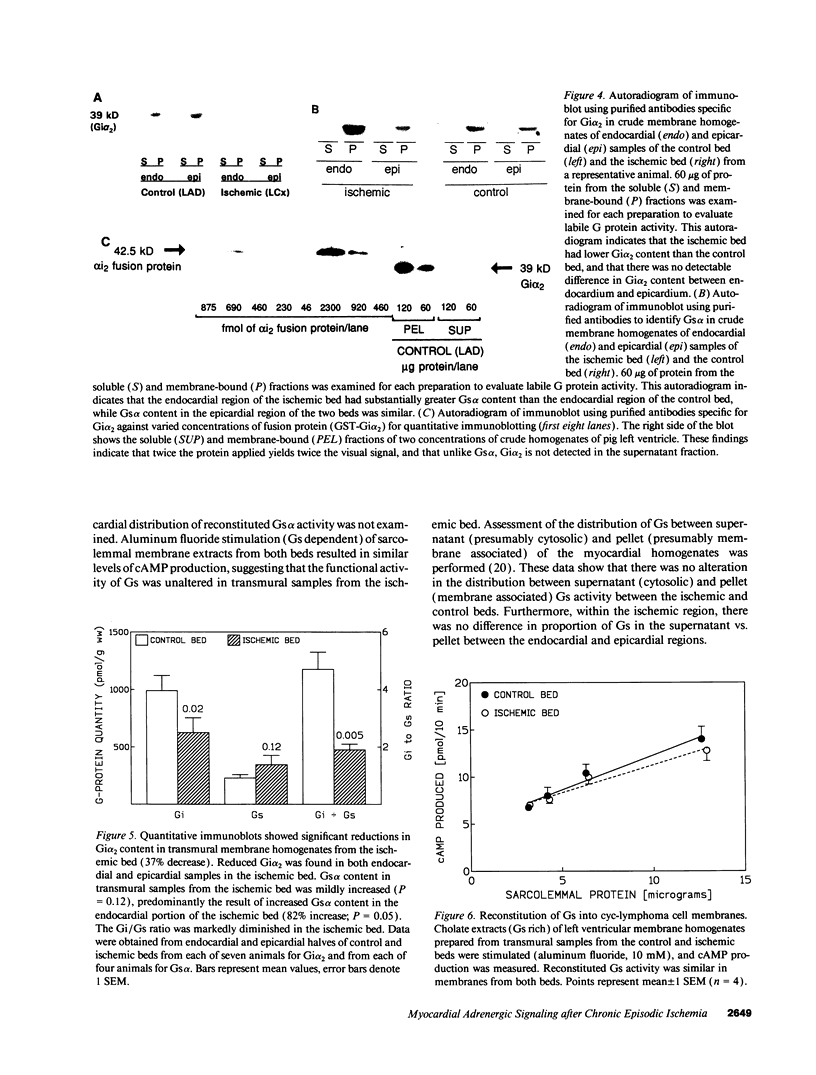
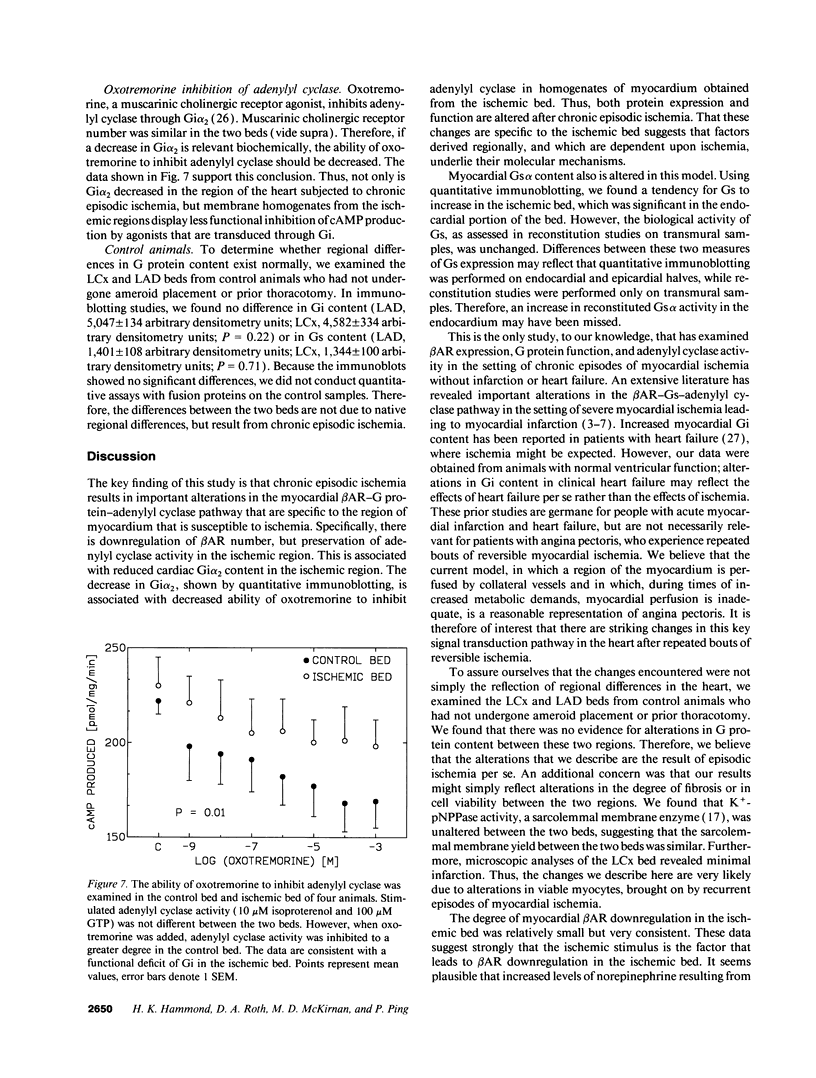
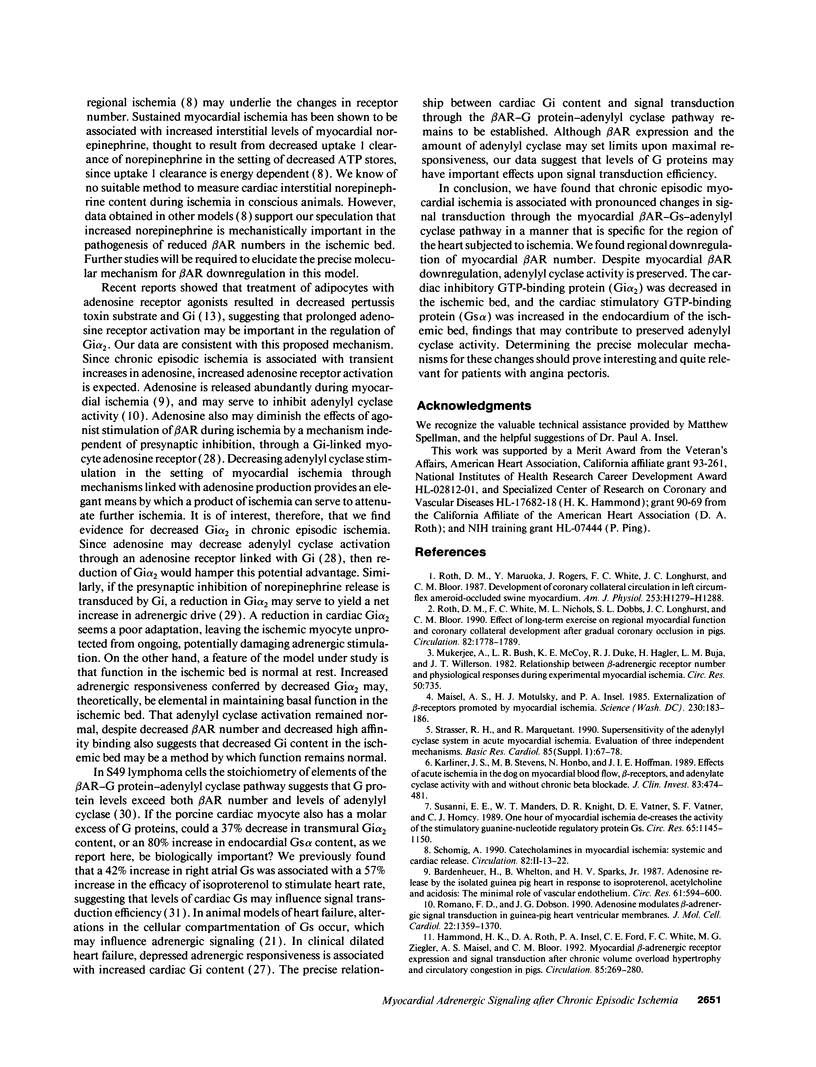
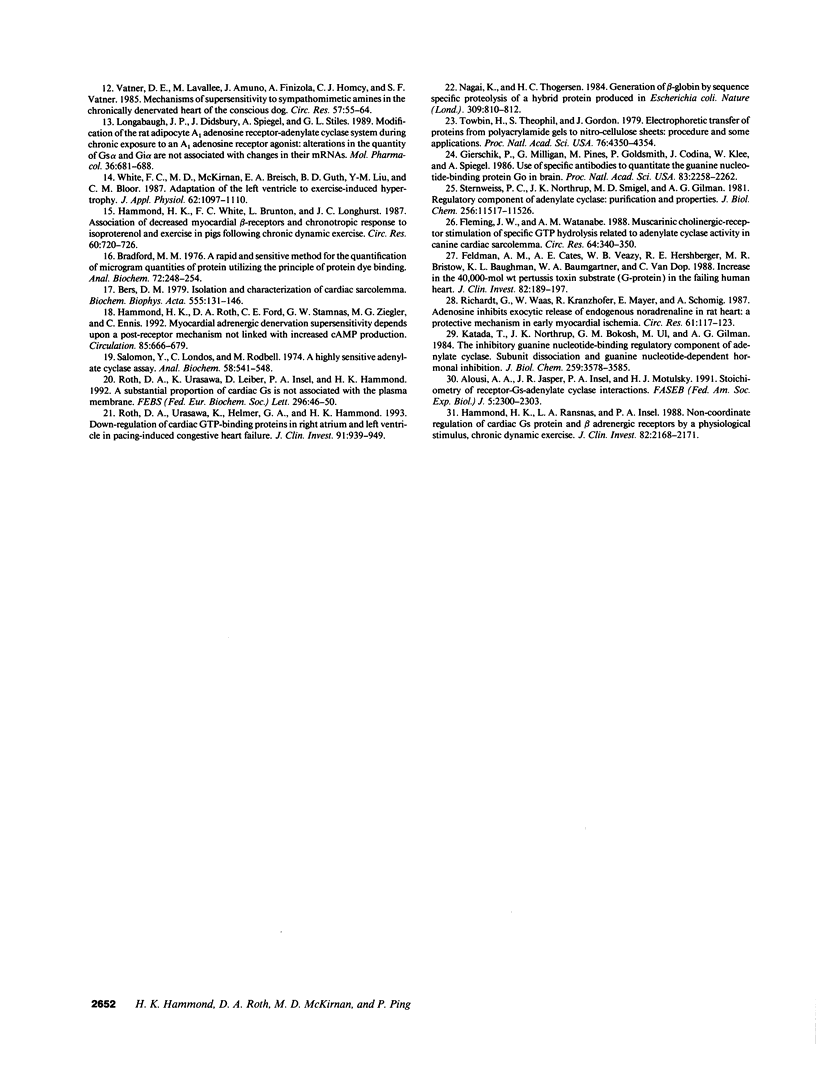
Images in this article
Selected References
These references are in PubMed. This may not be the complete list of references from this article.
- Alousi A. A., Jasper J. R., Insel P. A., Motulsky H. J. Stoichiometry of receptor-Gs-adenylate cyclase interactions. FASEB J. 1991 Jun;5(9):2300–2303. doi: 10.1096/fasebj.5.9.1650314. [DOI] [PubMed] [Google Scholar]
- Bardenheuer H., Whelton B., Sparks H. V., Jr Adenosine release by the isolated guinea pig heart in response to isoproterenol, acetylcholine, and acidosis: the minimal role of vascular endothelium. Circ Res. 1987 Oct;61(4):594–600. doi: 10.1161/01.res.61.4.594. [DOI] [PubMed] [Google Scholar]
- Bers D. M. Isolation and characterization of cardiac sarcolemma. Biochim Biophys Acta. 1979 Jul 19;555(1):131–146. doi: 10.1016/0005-2736(79)90078-6. [DOI] [PubMed] [Google Scholar]
- Bradford M. M. A rapid and sensitive method for the quantitation of microgram quantities of protein utilizing the principle of protein-dye binding. Anal Biochem. 1976 May 7;72:248–254. doi: 10.1016/0003-2697(76)90527-3. [DOI] [PubMed] [Google Scholar]
- Feldman A. M., Cates A. E., Veazey W. B., Hershberger R. E., Bristow M. R., Baughman K. L., Baumgartner W. A., Van Dop C. Increase of the 40,000-mol wt pertussis toxin substrate (G protein) in the failing human heart. J Clin Invest. 1988 Jul;82(1):189–197. doi: 10.1172/JCI113569. [DOI] [PMC free article] [PubMed] [Google Scholar]
- Fleming J. W., Watanabe A. M. Muscarinic cholinergic-receptor stimulation of specific GTP hydrolysis related to adenylate cyclase activity in canine cardiac sarcolemma. Circ Res. 1988 Aug;63(2):340–350. doi: 10.1161/01.res.63.2.340. [DOI] [PubMed] [Google Scholar]
- Gierschik P., Milligan G., Pines M., Goldsmith P., Codina J., Klee W., Spiegel A. Use of specific antibodies to quantitate the guanine nucleotide-binding protein Go in brain. Proc Natl Acad Sci U S A. 1986 Apr;83(7):2258–2262. doi: 10.1073/pnas.83.7.2258. [DOI] [PMC free article] [PubMed] [Google Scholar]
- Hammond H. K., Ransnas L. A., Insel P. A. Noncoordinate regulation of cardiac Gs protein and beta-adrenergic receptors by a physiological stimulus, chronic dynamic exercise. J Clin Invest. 1988 Dec;82(6):2168–2171. doi: 10.1172/JCI113840. [DOI] [PMC free article] [PubMed] [Google Scholar]
- Hammond H. K., Roth D. A., Ford C. E., Stamnas G. W., Ziegler M. G., Ennis C. Myocardial adrenergic denervation supersensitivity depends on a postreceptor mechanism not linked with increased cAMP production. Circulation. 1992 Feb;85(2):666–679. doi: 10.1161/01.cir.85.2.666. [DOI] [PubMed] [Google Scholar]
- Hammond H. K., Roth D. A., Insel P. A., Ford C. E., White F. C., Maisel A. S., Ziegler M. G., Bloor C. M. Myocardial beta-adrenergic receptor expression and signal transduction after chronic volume-overload hypertrophy and circulatory congestion. Circulation. 1992 Jan;85(1):269–280. doi: 10.1161/01.cir.85.1.269. [DOI] [PubMed] [Google Scholar]
- Hammond H. K., White F. C., Brunton L. L., Longhurst J. C. Association of decreased myocardial beta-receptors and chronotropic response to isoproterenol and exercise in pigs following chronic dynamic exercise. Circ Res. 1987 May;60(5):720–726. doi: 10.1161/01.res.60.5.720. [DOI] [PubMed] [Google Scholar]
- Karliner J. S., Stevens M. B., Honbo N., Hoffman J. I. Effects of acute ischemia in the dog on myocardial blood flow, beta receptors, and adenylate cyclase activity with and without chronic beta blockade. J Clin Invest. 1989 Feb;83(2):474–481. doi: 10.1172/JCI113906. [DOI] [PMC free article] [PubMed] [Google Scholar]
- Katada T., Northup J. K., Bokoch G. M., Ui M., Gilman A. G. The inhibitory guanine nucleotide-binding regulatory component of adenylate cyclase. Subunit dissociation and guanine nucleotide-dependent hormonal inhibition. J Biol Chem. 1984 Mar 25;259(6):3578–3585. [PubMed] [Google Scholar]
- Longabaugh J. P., Didsbury J., Spiegel A., Stiles G. L. Modification of the rat adipocyte A1 adenosine receptor-adenylate cyclase system during chronic exposure to an A1 adenosine receptor agonist: alterations in the quantity of GS alpha and Gi alpha are not associated with changes in their mRNAs. Mol Pharmacol. 1989 Nov;36(5):681–688. [PubMed] [Google Scholar]
- Maisel A. S., Motulsky H. J., Insel P. A. Externalization of beta-adrenergic receptors promoted by myocardial ischemia. Science. 1985 Oct 11;230(4722):183–186. doi: 10.1126/science.2994229. [DOI] [PubMed] [Google Scholar]
- Mukherjee A., Bush L. R., McCoy K. E., Duke R. J., Hagler H., Buja L. M., Willerson J. T. Relationship between beta-adrenergic receptor numbers and physiological responses during experimental canine myocardial ischemia. Circ Res. 1982 May;50(5):735–741. doi: 10.1161/01.res.50.5.735. [DOI] [PubMed] [Google Scholar]
- Nagai K., Thøgersen H. C. Generation of beta-globin by sequence-specific proteolysis of a hybrid protein produced in Escherichia coli. 1984 Jun 28-Jul 4Nature. 309(5971):810–812. doi: 10.1038/309810a0. [DOI] [PubMed] [Google Scholar]
- Richardt G., Waas W., Kranzhöfer R., Mayer E., Schömig A. Adenosine inhibits exocytotic release of endogenous noradrenaline in rat heart: a protective mechanism in early myocardial ischemia. Circ Res. 1987 Jul;61(1):117–123. doi: 10.1161/01.res.61.1.117. [DOI] [PubMed] [Google Scholar]
- Romano F. D., Dobson J. G., Jr Adenosine modulates beta-adrenergic signal transduction in guinea-pig heart ventricular membranes. J Mol Cell Cardiol. 1990 Dec;22(12):1359–1370. doi: 10.1016/0022-2828(90)90981-7. [DOI] [PubMed] [Google Scholar]
- Roth D. A., Urasawa K., Helmer G. A., Hammond H. K. Downregulation of cardiac guanosine 5'-triphosphate-binding proteins in right atrium and left ventricle in pacing-induced congestive heart failure. J Clin Invest. 1993 Mar;91(3):939–949. doi: 10.1172/JCI116315. [DOI] [PMC free article] [PubMed] [Google Scholar]
- Roth D. A., Urasawa K., Leiber D., Insel P. A., Hammond H. K. A substantial proportion of cardiac Gs is not associated with the plasma membrane. FEBS Lett. 1992 Jan 13;296(1):46–50. doi: 10.1016/0014-5793(92)80400-b. [DOI] [PubMed] [Google Scholar]
- Roth D. M., Maruoka Y., Rogers J., White F. C., Longhurst J. C., Bloor C. M. Development of coronary collateral circulation in left circumflex Ameroid-occluded swine myocardium. Am J Physiol. 1987 Nov;253(5 Pt 2):H1279–H1288. doi: 10.1152/ajpheart.1987.253.5.H1279. [DOI] [PubMed] [Google Scholar]
- Roth D. M., White F. C., Nichols M. L., Dobbs S. L., Longhurst J. C., Bloor C. M. Effect of long-term exercise on regional myocardial function and coronary collateral development after gradual coronary artery occlusion in pigs. Circulation. 1990 Nov;82(5):1778–1789. doi: 10.1161/01.cir.82.5.1778. [DOI] [PubMed] [Google Scholar]
- Salomon Y., Londos C., Rodbell M. A highly sensitive adenylate cyclase assay. Anal Biochem. 1974 Apr;58(2):541–548. doi: 10.1016/0003-2697(74)90222-x. [DOI] [PubMed] [Google Scholar]
- Sternweis P. C., Northup J. K., Smigel M. D., Gilman A. G. The regulatory component of adenylate cyclase. Purification and properties. J Biol Chem. 1981 Nov 25;256(22):11517–11526. [PubMed] [Google Scholar]
- Strasser R. H., Marquetant R. Supersensitivity of the adenylyl cyclase system in acute myocardial ischemia: evaluation of three independent mechanisms. Basic Res Cardiol. 1990;85 (Suppl 1):67–78. doi: 10.1007/978-3-662-11038-6_6. [DOI] [PubMed] [Google Scholar]
- Susanni E. E., Manders W. T., Knight D. R., Vatner D. E., Vatner S. F., Homcy C. J. One hour of myocardial ischemia decreases the activity of the stimulatory guanine-nucleotide regulatory protein Gs. Circ Res. 1989 Oct;65(4):1145–1150. doi: 10.1161/01.res.65.4.1145. [DOI] [PubMed] [Google Scholar]
- Towbin H., Staehelin T., Gordon J. Electrophoretic transfer of proteins from polyacrylamide gels to nitrocellulose sheets: procedure and some applications. Proc Natl Acad Sci U S A. 1979 Sep;76(9):4350–4354. doi: 10.1073/pnas.76.9.4350. [DOI] [PMC free article] [PubMed] [Google Scholar]
- Vatner D. E., Lavallee M., Amano J., Finizola A., Homcy C. J., Vatner S. F. Mechanisms of supersensitivity to sympathomimetic amines in the chronically denervated heart of the conscious dog. Circ Res. 1985 Jul;57(1):55–64. doi: 10.1161/01.res.57.1.55. [DOI] [PubMed] [Google Scholar]
- White F. C., McKirnan M. D., Breisch E. A., Guth B. D., Liu Y. M., Bloor C. M. Adaptation of the left ventricle to exercise-induced hypertrophy. J Appl Physiol (1985) 1987 Mar;62(3):1097–1110. doi: 10.1152/jappl.1987.62.3.1097. [DOI] [PubMed] [Google Scholar]





